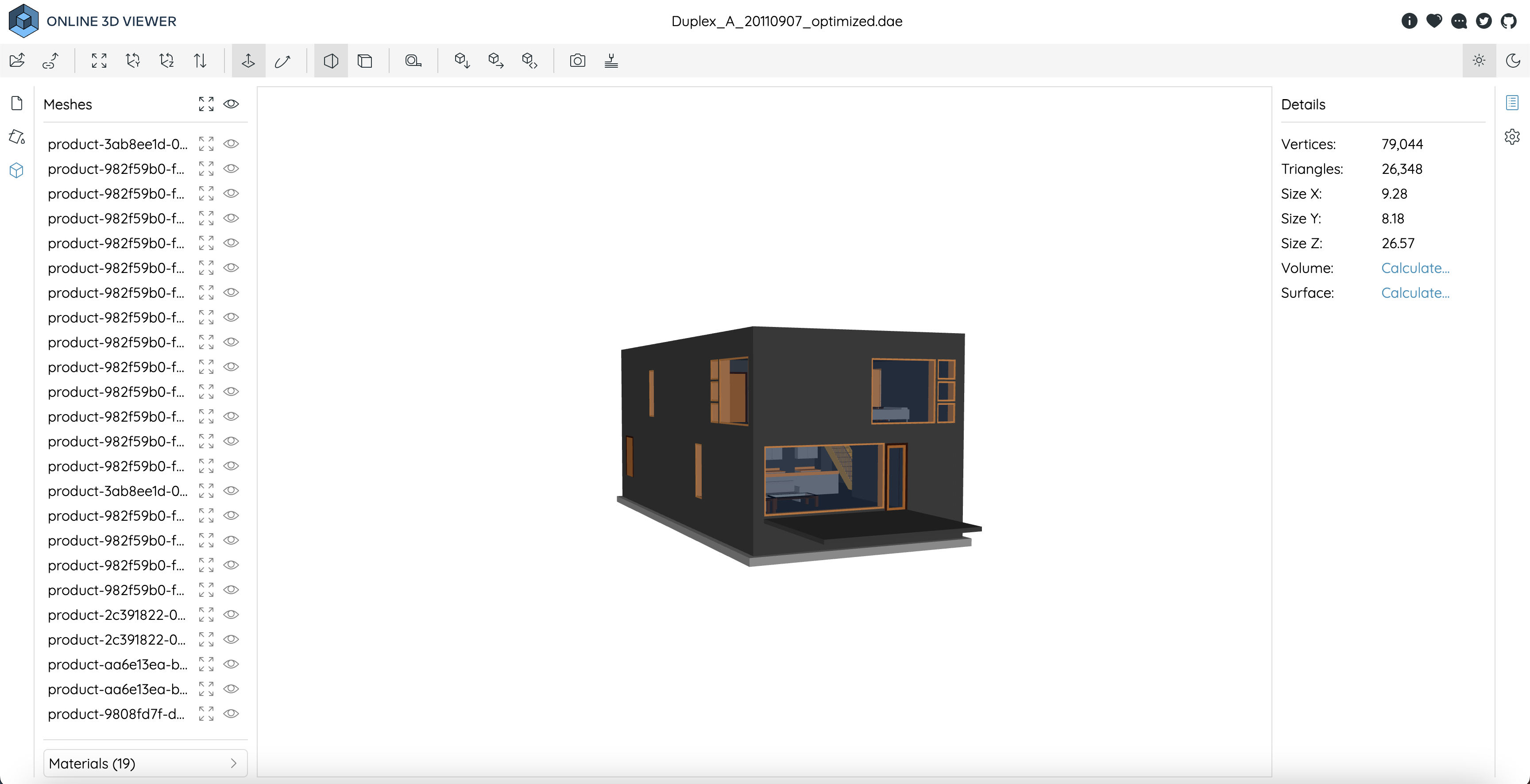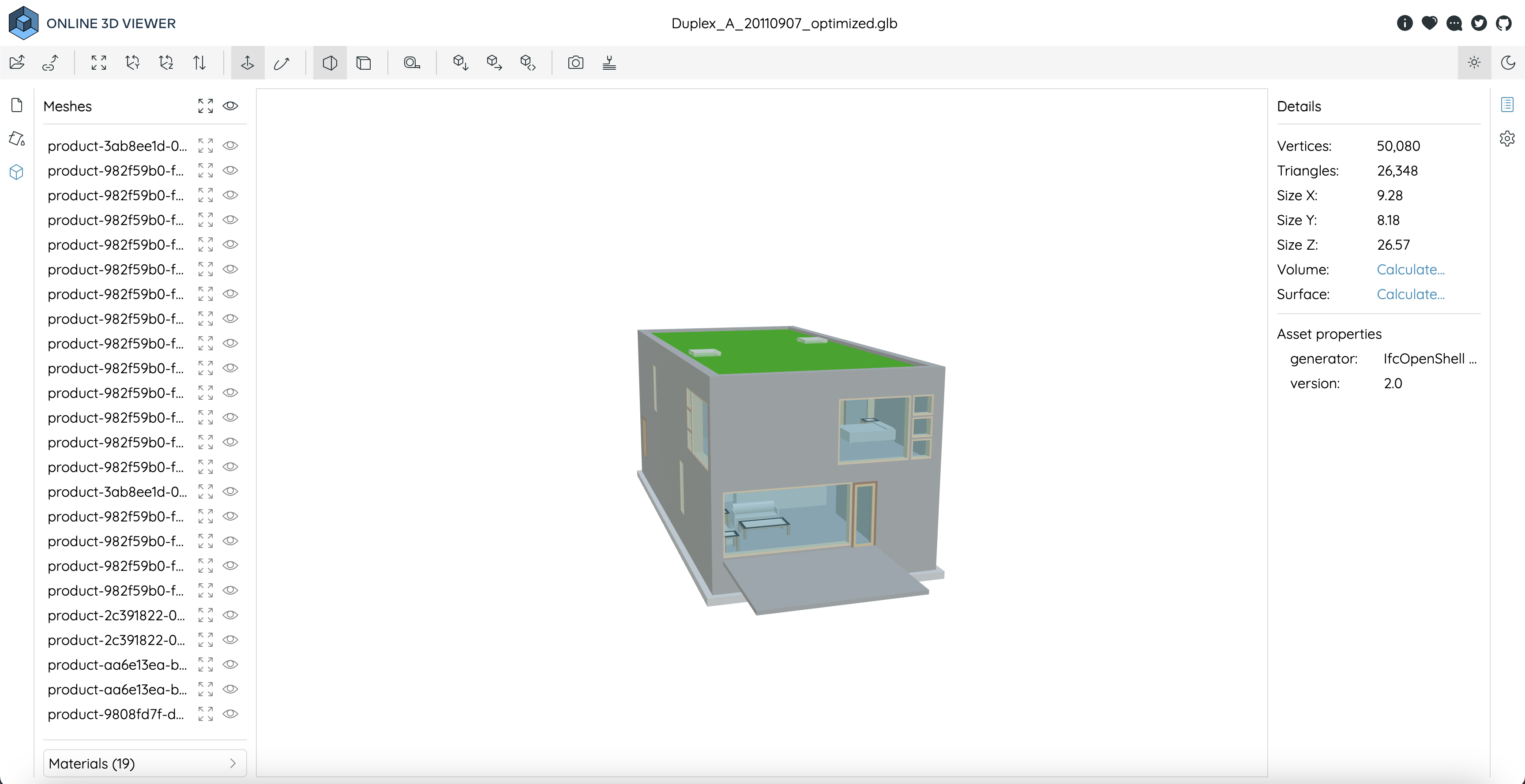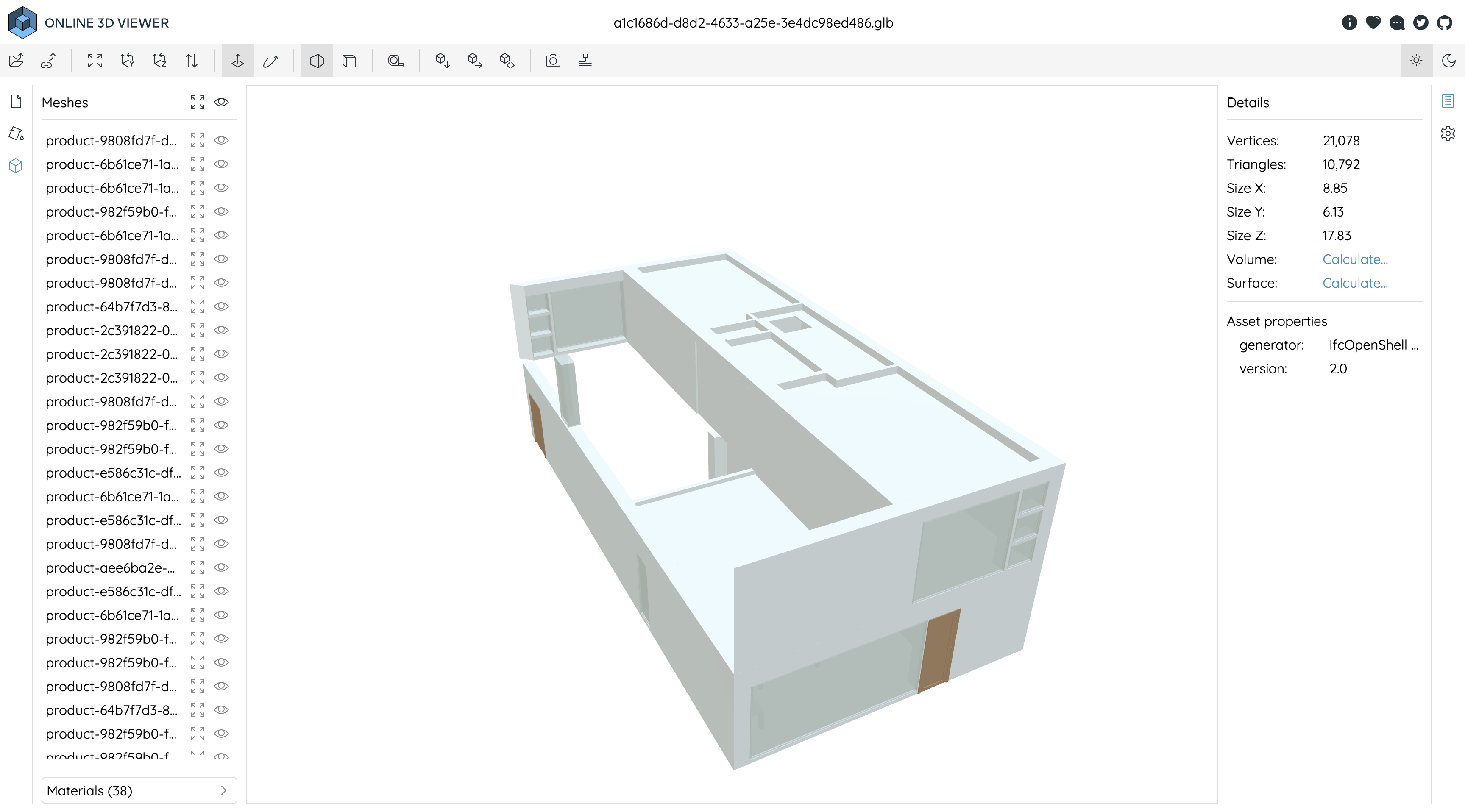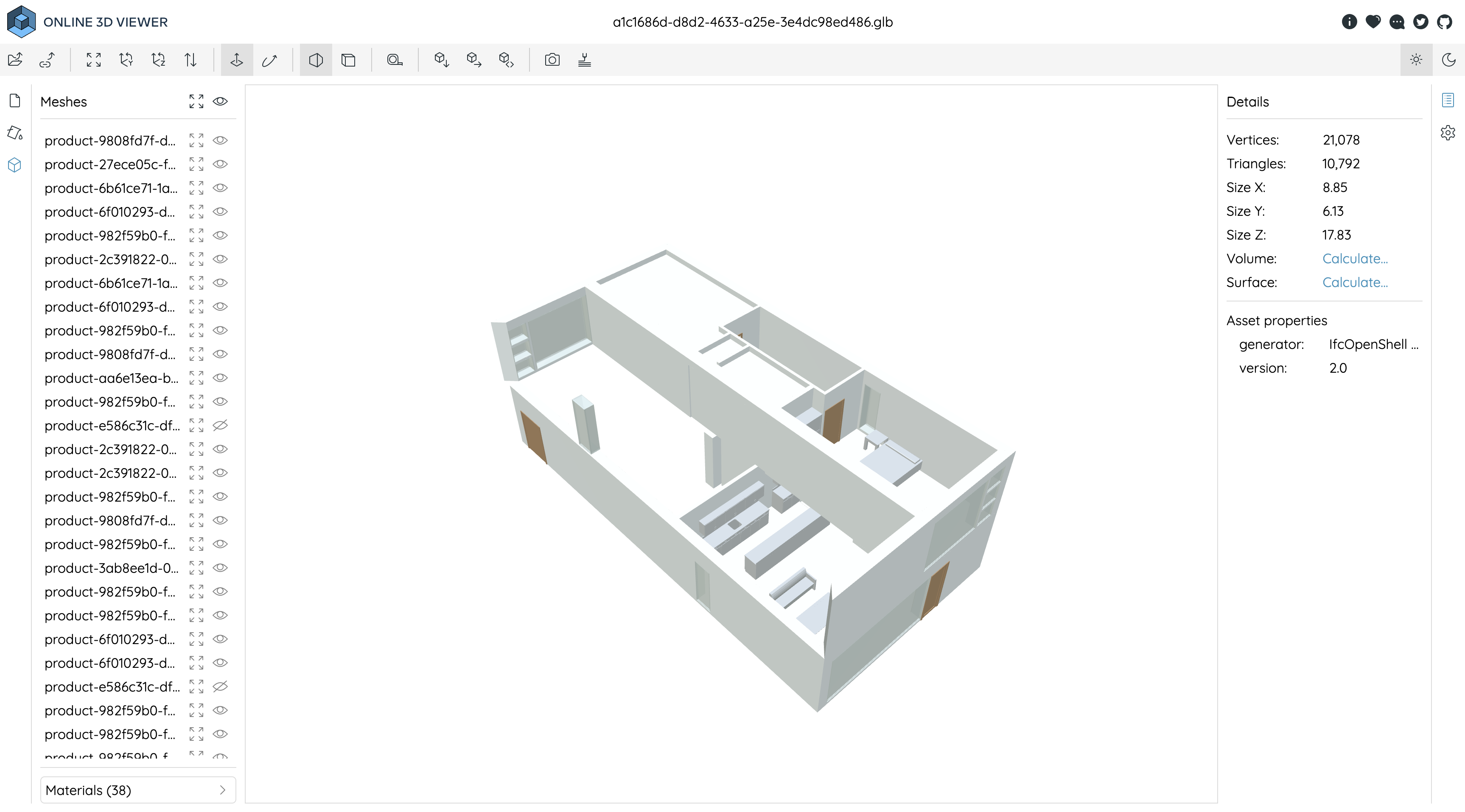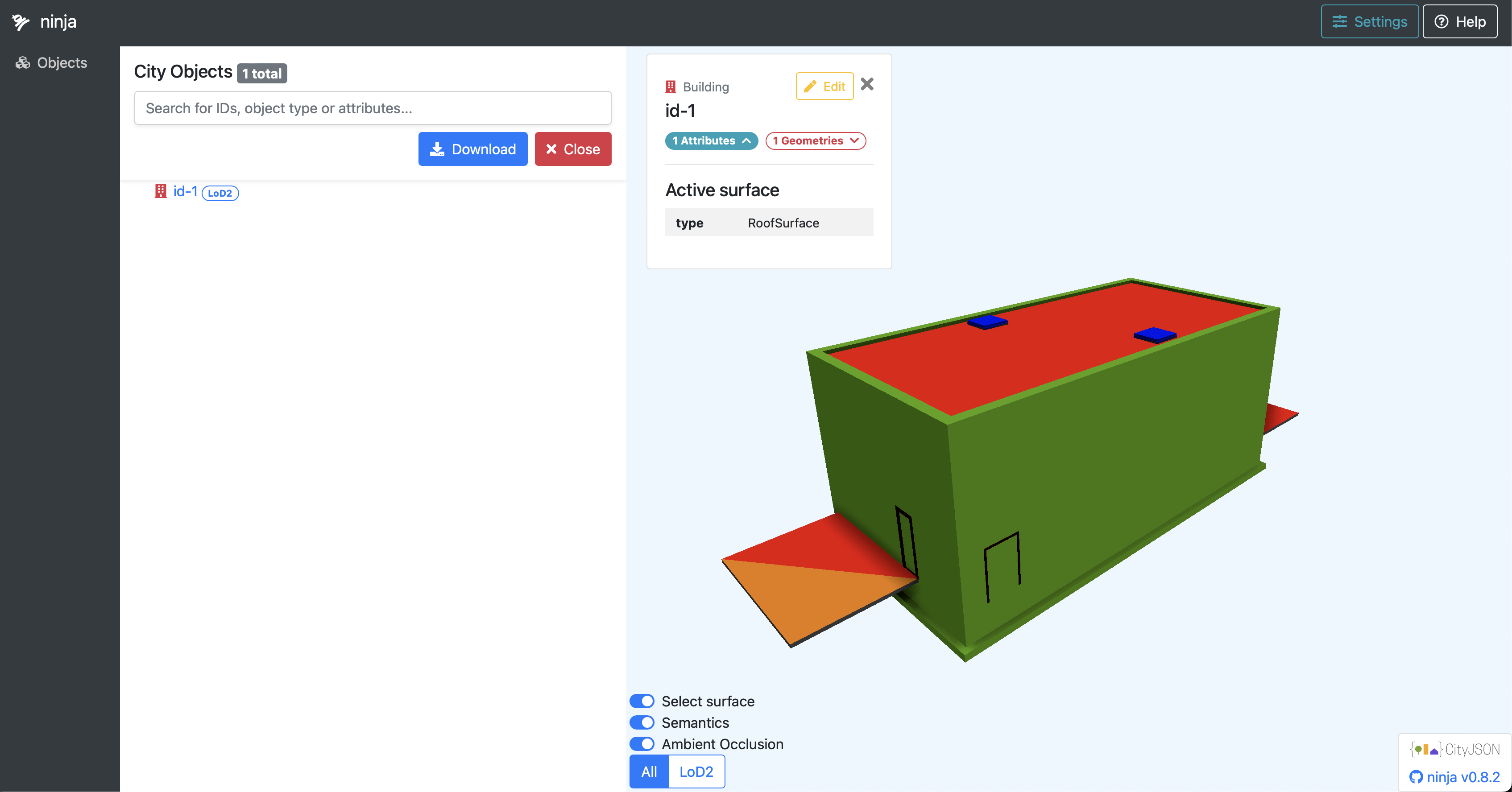Convert IFC to glTF, COLLADA or CityJSON with IfcConvert
Feature Group: Convert, Host | IfcOpenShell / IfcConvert
Introduction
Different conversions are available with IfcConvert (part of IfcOpenShell) and detailed in IfcConvert - Usage
This includes:
- Collada (.dae). 3D models of buildings, bridges, monuments can be imported in KML (Key Markup Language) with the COLLADA interchange file format. This means the model can be displayed on Google Earth or Cesium.
- glTF (.glb). Same as above with a new format. Supported in Cesium.
- CityJson. A recent addition to the IfcConvert stack. The CityJSON model can be imported in Geo products designed to manage and render CityGML models. E.g. 3DCityDB which also can import Collada and glTF files.
Caveats
IfcConvert is not a library but an executable that needs to be run from a Celery task in a subprocess.
Because multiple types of issues can occur, a timeout is configured on the subprocess to avoid that the Celery worker gets stuck.
The timeout if defined in the request with a default of 60 sec and has configured lower and uper bounds.
When the bundleId and the unitId are provided, the converted file can be registered in the database in the unitjson column of the bundleunit.
#
# Convert an IFC to glTF, COLLADA or CityJSON
#
class IfcConvert_Instruction(BaseModel):
sourceFileURL: str | None = NONE_IFC_URL
targetFormat: Literal['glTF','COLLADA','CityJSON']
timeout: Optional[int] = Field(60, ge=30, le=180)
bundleId: str | None = None
unitId: str | None = None
class IfcConvert_Result(BaseModel):
resultPath: str # relative path of the result file (gltf, dae, or json)
runtime: float | None = 0.0 # in seconds
Examples
Conversion of Duplex_A_20110907_optimized.ifc to Collada
With Online 3D Viewer
Conversion of Duplex_A_20110907_optimized.ifc to glTF
Same viewer
Conversion to glTF of Duplex-A (apartment) extracted as a SpatialZone from Duplex_A_20110907_optimized
Same but with some meshes hidden in Online 3D Viewer to see the inside of the apartment
Conversion to CityJSON
This originates from the paper Automatic conversion of IFC datasets to geometrically and semantically correct CityGML LOD3 buildings (../features/references.md#ifc-to-citygml).
The code was originally published on https://github.com/tudelft3d/ifc2citygml, thenafter on https://github.com/tudelft3d/esri_geobim, then enventually made available under the umbrella of IfcOpenShell on https://github.com/IfcOpenShell/ifc-to-cityjson.
The functionality has been integrated into IfcConvert. Downloads are available at IfcConvert Download
The CityJSON version outputted is 1.0 and is outdated. It is possible to upgrade the version to 2.0 with the cityjson toolkit cjio There is also an online CityJSON Validator.
Conversion of Duplex_A_20110907_optimized.ifc to CityJSON
With ninja viewer of which the code is available on github
Issue: Conversion of IFC_Schependomlaan from IFC to CityJSON failed
Last login: Thu Oct 24 22:21:23 on ttys042
IfcOpenShell IfcConvert 0.7.11-03935a91d (OCC 7.5.3)
Scanning file...
Done scanning file
CGAL error: assertion violation!
Expression :
File : /Users/hetzner/IfcOpenShell_v0.8.0/build/Darwin/arm64/10.9/install/cgal-5.3/include/CGAL/Nef_3/SNC_const_decorator.h
Line : 276
Explanation: it is not possible to decide which one is a visible facet (if any)
Refer to the bug-reporting instructions at https://www.cgal.org/bug_report.html
The conversion completes reasonably fast on relatively simple models.
For complex models such as IFC_Schependomlaan or ARK_NordicLCA_Housing_Concrete_BuildingPermit_Revit, running the conversion on the extracted envelope was not successful either.
